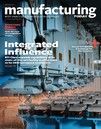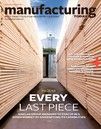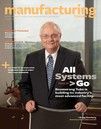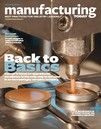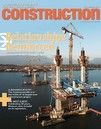Evolving Impressions
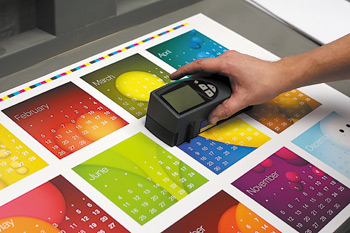 When considering specific options for your next printing project it helps to have a good understanding of the different types of printing available and how new technology is helping to make printing and marketing communications more effective and cost-efficient.
When considering specific options for your next printing project it helps to have a good understanding of the different types of printing available and how new technology is helping to make printing and marketing communications more effective and cost-efficient.
The earliest dated printed book, known as the Diamond Sutra, was produced in China in 868 CE, but it is believed that the practice dates back well before this date. Many other contributors like Johannes Gutenberg and Ottmar Mergentahler have since then given us the ability to share our thoughts, ideas [and promotions] in printed form with others. The twenty-first century has already ushered in a number of revolutionary new printing technologies including on-demand printing from the Web, variable data printing and other cost saving and/or earth-friendly options.
When considering specific options for your next printing project it helps to have a good understanding of the different types of printing available and how new technology is helping to make printing and marketing communications more effective and cost-efficient. There are five printing methods that use plates or some other form of image carrier—lithography, flexography, gravure, screen printing and letterpress. The three most commonly used commercial printing processes are sheet-fed offset, web offset and digital. Each of these has an important niche, with inherent advantages and disadvantages.
Sheet-fed offset printing is a widely used printing technique where the inked image is transferred (or “offset”) from a plate to a rubber blanket, then to the printing surface in one to six colors. Offset printing is the most common form of high volume commercial printing such as brochures, direct mailers and product sheets due to advantages in quality and efficiency in high volume jobs. While modern digital presses are getting closer to the cost/benefit of offset for for high-quality work, they have not yet been able to compete with the sheer efficiency nor final quality that an offset press can produce. Furthermore, most modern offset presses are using computer-to-plate systems (Direct-to-Plate or DTP) as opposed to the older computer-to-film workflows, which further increases their quality.
Advantages of offset printing are: Consistent high image quality—Offset printing produces sharper and cleaner images and type than letterpress printing because the rubber blanket conforms to the texture of the printing surface. It has a quick and easy production of printing plates. Changes can be made more efficiently and at a lower cost due to new pre-press technology.
Another form of offset is web offset printing. First of all, web printing has nothing to do with the World Wide Web or Internet. Web presses got their name from the way they handle and feed the paper into the press. Unlike sheet-fed offset printing which feed the paper stock sheet-by-sheet, as previously discussed, web presses feed the stock continuously from a large roll. Web presses are most often used to print large quantities (tens of thousands or millions) of magazines, newspapers, catalogs or the like. Nearly all of the national publications you see on a newsstand, and your larger daily newspapers, are printed on a web press.
This process is used for mass-producing prints because a web offset press can run much faster than ordinary sheet-fed offset presses, while delivering close to the same quality. Also, web presses can typically handle several colors of ink at the same time. In fact, some web presses can print eight or more colors on the same run. These extra “color” capabilities are often used for varnishes. In addition, many web presses also have a lot of finishing equipment attached to them, enabling folding, binding, perforating and cutting to all be done on the same machine (in-line) and at a very high speed.
Digital printing is the reproduction of digital images on a substrate, such as printing or photo paper, film, cloth, plastic and more. Similar to direct-to-plate printing, digital printing eliminates the need for film by using computer files. However, digital printing goes one step further by creating prints directly from the computer file and therefore taking the plates out of the equation as well. This makes the digital printing process more similar to color photocopying than to traditional printing.
Digital printing is ideal for lower-quantity and customized needs, but can only print toner-based approximations of up to 4-colors. Like photocopying, however, the price-per-piece tends to be fairly constant, regardless of the quantity. You’ll probably pay the same price-per-piece for 50 or 5,000 prints. For higher quantities of fullcolor printing, make sure to review all your options before deciding which method best fits your needs.
Variable data printing, or VDP (also known as Variable Information Printing or VIP) is a form of digital printing in which elements such as text, graphics and images may be changed from one printed piece to the next without stopping or slowing down the press. It uses information from a database or external file. For example, a set of personalized letters – each with the same basic layout, can be printed with a different name and address on each letter. Variable data printing is mainly used for direct marketing, customer relationship management and advertising. The technique is a direct outgrowth of digital printing that harnesses computer databases and digital presses to create high-quality, full color documents, with a look and feel comparable to conventional offset printing.
Variable data printing enables the mass customization of documents via digital print technology, as opposed to the ‘massproduction’ of a single document using offset lithography. Instead of producing 10,000 copies of a single document, delivering a single message to 10,000 customers, variable data printing can print 10,000 unique documents with customized messages for each customer.
On-demand digital printing is another exciting new extension of digital printing in which digital templates of a flyer, brochures, or mailers are stored on a Web site or web-based application. It can be accessed when needed by wholesalers, dealers, reps, or other entities. This process allows for the user to modify certain areas of the brochure by adding a logo, phone number, address and Web site, review the modified piece and then order the printing. They can also upload a mailing list, pay for the postage and “click to send” the mailing all without leaving the comfort of their desks. This new process is a great fit for a company that has a large dealer network and wants to support this network with marketing materials, but also wants to control the brand image and other creative elements within, leaving only specified areas that can be modified. Usually, an electronic proof is forwarded to the marketing/management of the parent company or entity for approval before printing ensues. The controlling entity can also offer co-op credits for their network. If the real cost to print 5,000 tri-fold brochures is $2,000 (or 2,000 “credits”), the parent company may choose to offer to pay a percentage of the printing costs as a “dealer incentive.” In this type of arrangement, both parties win. The parent company benefits by the additional marketing efforts put forth by the dealer and the integrated look of the piece, and the dealer gains by obtaining a professionally designed and printed marketing piece at a very good price.
When preparing for your next printing adventure, consult a variety of printers, print brokers, and design studios to learn more about the techniques, processes and prices that apply to the specifications of your project. You might be surprised how many options you have for getting your message out.
